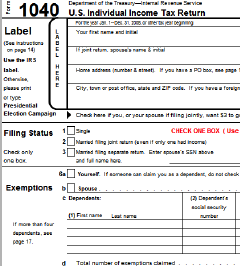As 2012 has ended, you can now figure out what your tax situation is going to be. If you are like many Americans, and get a fixed salary, and don’t itemize deductions, your taxes are usually going to be pretty straight forward.
While you are waiting for your W-2 to arrive (it legally has to be sent out in January), you can take your last pay stub of December and figure out a rough idea of whether you’ll be getting a refund or owing taxes. Your last pay stub should have everything you’ll need, including gross income, taxes withheld for the year, etc
Using tools like the TurboTax TaxCaster, you can plug in your numbers, and get an estimate of what your refund will be. TurboTax also has free software to file your federal income taxes, I’ve used it in the past when my taxes were fairly simple.
One thing to be wary of, many tax preparation services offer a “Rapid Refund” type deal, which allows you to get your refund faster for a fee. I would never recommend one of these, as A) If you do Direct Deposit of your refund, it comes pretty quick these days B) You’re essentially taking a loan at a huge interest rate (a $25 fee on a $250 refund, assuming it takes month to get a normal refund is a 120% APR loan).
If you are getting a refund this year, it’s a great way to jump-start your emergency savings fund. Many people look at tax refunds as a “bonus”, but there are two things to keep in mind. A refund means you overpaid the government all year. You’ve essentially loaned the government that money at 0% interest. Unless you really have a problem forcing yourself to save, if you are consistently getting large refunds, you may want to lower the number of withholdings on your paycheck (meaning the government will take less out). This will give you more money in each paycheck, but a lower tax refund. In theory the perfect situation is you owe the government nothing, and they owe you nothing. Boring, but probably the smartest cash flow wise.

